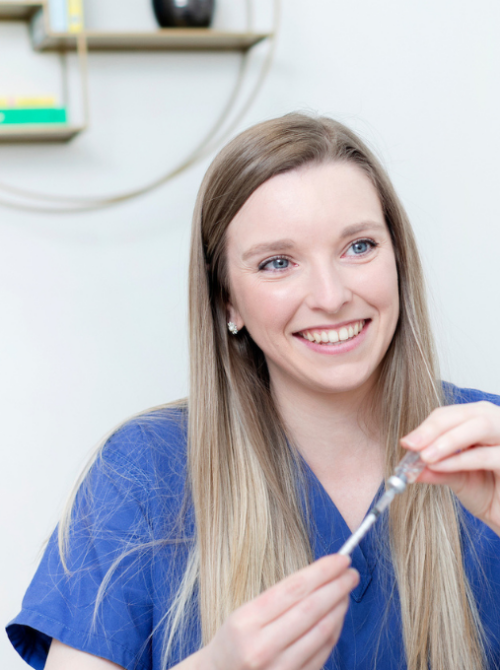Understanding the main hormones that affect fertility
When it comes to fertility, hormones play a critical role in regulating and influencing various processes within a woman’s reproductive system, providing valuable insights into fertility and the different phases a woman may experience.
We asked Dr Montse Amodeo to break down the purpose of each type of IVF medication, so you can understand the main hormones involved and how they fluctuate throughout the cycle.
Understanding the Main Hormones that Affect Fertility: Their Roles and Effects Throughout a Woman’s Cycle
When it comes to fertility, hormones play a critical role in regulating and influencing various processes within a woman’s reproductive system.
Understanding the main hormones involved and how they fluctuate throughout the menstrual cycle can provide valuable insights into fertility and the different phases a woman may experience.
We asked Dr Montse Amodeo to explain the key hormones involved in fertility, their roles, and how they may make you feel during each phase of a woman’s cycle.
Follicle-Stimulating Hormone (FSH)
Follicle-Stimulating Hormone (FSH) plays a crucial role in the menstrual cycle of a woman, initiating the growth of ovarian follicles, leading to the production of oestrogen, and eventually resulting in ovulation.
It is produced and released by the pituitary gland, which is located at the base of the brain.
At the beginning of a woman’s menstrual cycle, FSH levels start to rise. This hormone stimulates the growth of ovarian follicles in the ovary before the release of an egg from one follicle at ovulation. These follicles contain the eggs that are to be released during the ovulation phase.
In response to FSH, these follicles begin to mature, and they start producing another hormone known as oestrogen. As the follicles mature, the level of oestrogen in the body rises. This rising level of oestrogen triggers a surge in another hormone called luteinising hormone (LH), which leads to the release of a mature egg from the dominant follicle – a process known as ovulation.
During this phase, some women may experience mild bloating or breast tenderness. Additionally, increased cervical mucus production may be noticed as the body prepares for potential fertilisation.
It’s also important to note that changes in FSH levels throughout the menstrual cycle can be used as an indicator of ovarian reserve (the number and quality of eggs in the ovaries) and can help diagnose certain conditions such as polycystic ovary syndrome (PCOS) or premature ovarian failure.
Luteinising Hormone (LH)
Luteinising hormone (LH) is another hormone also produced by the pituitary gland and plays two main roles in a woman’s menstrual cycle; triggering ovulation and stimulating the production of progesterone to prepare the body for a potential pregnancy.
In the first half of the menstrual cycle, the follicle-stimulating hormone (FSH) stimulates the growth of ovarian follicles, which produce oestrogen. As the level of oestrogen rises, it triggers a surge in LH – usually around the middle of the menstrual cycle.
This sudden increase in LH, often referred to as the ‘LH surge’, triggers ovulation, which is the release of a mature egg from the dominant follicle in the ovary. The egg then travels down the fallopian tube where it can potentially be fertilised by sperm.
After ovulation, the remnants of the dominant follicle in the ovary form a structure known as the corpus luteum. LH stimulates the corpus luteum to produce progesterone, a hormone necessary for preparing the lining of the uterus (endometrium) for possible implantation of a fertilised egg and supporting early pregnancy.
If pregnancy does not occur, the corpus luteum breaks down, leading to a decrease in progesterone levels and the start of a new menstrual cycle.
During the surge of LH, some women may experience a slightly increased sex drive, heightened energy levels, and more noticeable cervical mucus, which is typically clear and stretchy – a sign of increased fertility.
Oestrogen
Oestrogen, primarily produced by the ovaries, plays a fundamental role in the menstrual cycle. It helps regulate the menstrual cycle, promotes the growth of the uterine lining, and triggers the release of luteinising hormone for ovulation.
During the follicular phase, which occurs in the first half of the cycle, oestrogen levels gradually increase. This can contribute to feelings of increased energy, improved mood, and enhanced sexual desire.
At the start of the menstrual cycle, the levels of follicle-stimulating hormone (FSH) increase, stimulating the growth of ovarian follicles. These follicles then start to produce oestrogen.
The primary role of oestrogen in the menstrual cycle is to stimulate the growth and development of the uterus lining (endometrium) in preparation for potential pregnancy. This thickening of the uterine wall is crucial as it creates a nutrient-rich environment where a fertilised egg can implant and grow.
As the level of oestrogen rises, it leads to a decrease in FSH production to prevent overproduction of ovarian follicles. When the oestrogen level reaches its peak, usually around the middle of the menstrual cycle, it triggers a surge in luteinising hormone (LH), which in turn leads to ovulation – the release of a mature egg from the dominant ovarian follicle.
After ovulation, oestrogen levels drop rapidly and then increase again as the corpus luteum starts producing oestrogen (and progesterone) to maintain the uterine lining for a potential pregnancy.
If pregnancy does not occur, oestrogen and progesterone levels fall, causing the uterine lining to shed in a process known as menstruation, marking the start of a new menstrual cycle.
Progesterone
Progesterone, produced by the ovaries after ovulation, prepares the uterus for potential pregnancy.
After ovulation, the ruptured follicle transforms into a structure known as the corpus luteum. The corpus luteum produces progesterone. The rise in progesterone levels signals the body to prepare for potential pregnancy.
If fertilisation doesn’t occur, progesterone levels decrease, leading to the shedding of the uterine lining during menstruation.
Here are the key roles of progesterone in the menstrual cycle:
- Prepares the Endometrium: Progesterone readies the endometrium (the lining of the uterus) for the potential implantation of an embryo. It does this by promoting the thickening of the endometrium and stimulating it to secrete nutrients that the embryo will need for growth and survival.
- Prevents Uterine Contractions: Progesterone helps to prevent the muscles of the uterus from contracting, which could otherwise dislodge the embryo.
- Inhibits Immune Response: Progesterone also helps to suppress the maternal immunologic response to the ‘foreign’ embryo, thus preventing the body from rejecting it.
- Regulates the Menstrual Cycle: If fertilisation does not occur, the corpus luteum breaks down, causing a drop in progesterone levels. This drop triggers the shedding of the thickened uterine lining, leading to menstrual bleeding. The cycle then begins anew.
- Inhibits FSH and LH: High levels of progesterone inhibit the further release of Follicle Stimulating Hormone (FSH) and Luteinising Hormone (LH), thus preventing additional ovulation during pregnancy.
During the luteal phase, which occurs after ovulation, progesterone levels rise. This can lead to changes such as breast tenderness, bloating, and mild mood swings. Some women may also experience increased fatigue during this phase.
Human Chorionic Gonadotropin (hCG)
Human Chorionic Gonadotropin (hCG) is a hormone that plays several important roles in pregnancy:
- Pregnancy Detection: hCG is produced by the placenta after implantation. It is the hormone detected in pregnancy tests. A positive result means hCG is present, which typically indicates pregnancy.
- Supports Early Pregnancy: After implantation, the embryo starts to produce hCG. This hormone signals the corpus luteum (the remnant of the follicle that grew in the ovary) to continue producing progesterone, a hormone crucial for maintaining the uterine lining and supporting early pregnancy.
- Stimulates Foetal Growth: hCG also plays a role in the development of the foetus. It stimulates the ovaries to produce oestrogen and progesterone, hormones that are essential for foetal development.
- Prevents Immune Rejection of the Embryo: Some studies suggest that hCG may help in preventing the mother’s immune system from rejecting the embryo as a foreign body, thus aiding in the survival and development of the foetus.
- Development of Placenta: hCG aids in the growth and development of the placenta, a critical organ for nutrient and waste exchange between the mother and the baby.
- Nausea and Morning Sickness: High levels of hCG in the early stages of pregnancy are thought to be one of the causes of morning sickness, though the exact role of hCG in this symptom is not fully understood.
Tracking Hormonal Changes
Understanding the hormonal fluctuations throughout the menstrual cycle can be helpful when trying to conceive, but even if you aren’t, we recommend all women get to know their bodies and cycles. There are various methods available to track these changes, such as charting basal body temperature, monitoring cervical mucus, or using ovulation predictor kits.
It’s important to note that every woman’s experience with hormonal changes may vary. While some women may experience noticeable symptoms, others may not feel any significant shifts. Additionally, certain conditions or hormone imbalances can affect how hormones are regulated in the body.
Consulting with a doctor or fertility specialist can provide personalised guidance and further insights into individual hormone levels and fertility health.
Note: This blog post is for informational purposes only and should not be considered medical advice. For personalised guidance, please consult with a doctor or fertility specialist.







